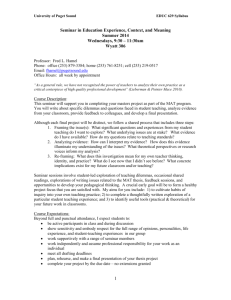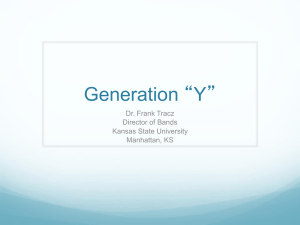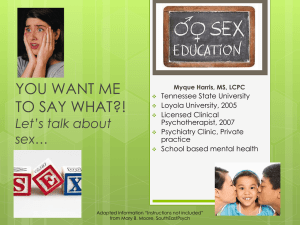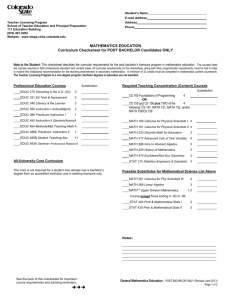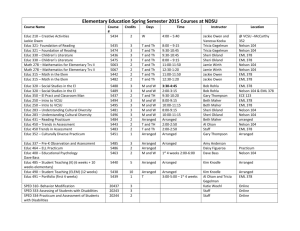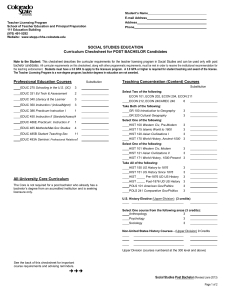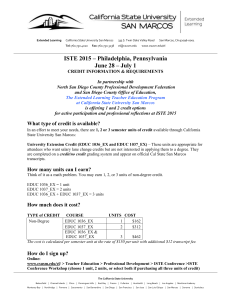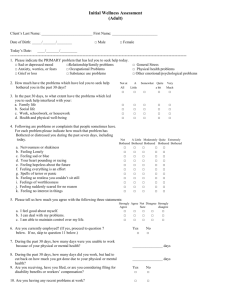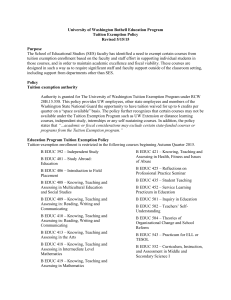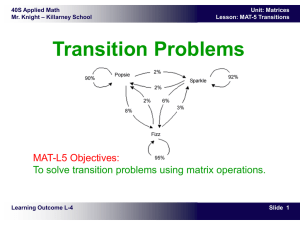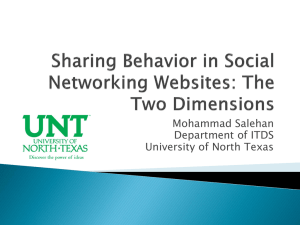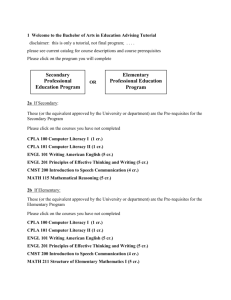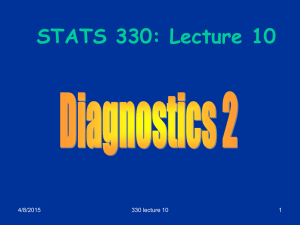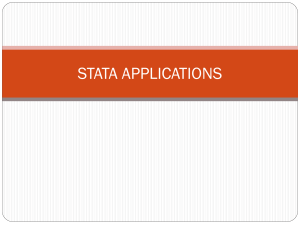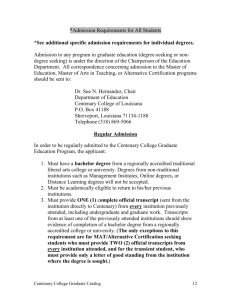The value and practice of social networks and social media in
advertisement
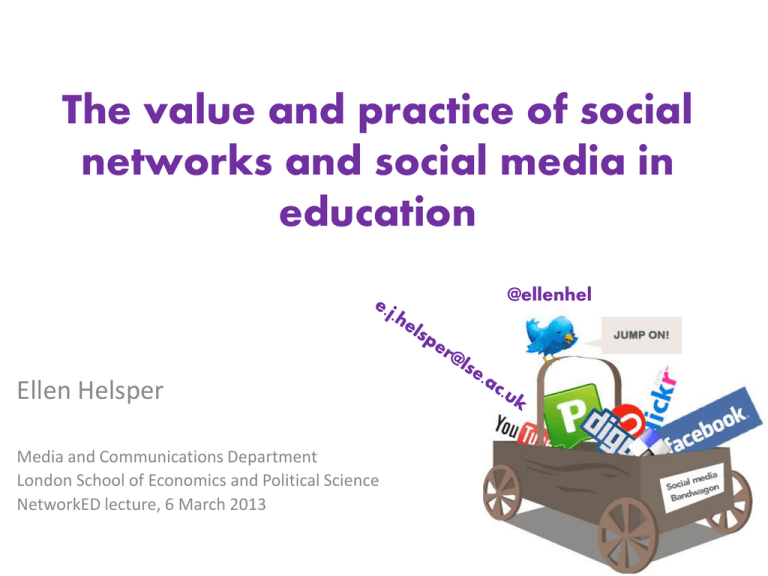
The value and practice of social networks and social media in education @ellenhel Ellen Helsper Media and Communications Department London School of Economics and Political Science NetworkED lecture, 6 March 2013 The internet in everyday life The internet in education Social media in everyday life Social media in education Adults & Young people THE INTERNET IN EVERY DAY LIFE Fully digital? I have I can Access: Skills • Mobility • Ubiquity • Privacy • Technical • Social • Critical • Creative Motivations I feel •Societal •Personal (Helsper, 2012) Engagement • • Civic Educational • Social • • Economic Cultural I do Adults Who? Between 36 and 45, university educated, studying or employed, male, AB socio-economic status with children in the household. Where? Midlands or London, countryside home, at home, work or mobile. What? Traditional broadcast content (36% daily user) Web2.0 (35% daily user) UGC (5% daily user) Information seeking (21% daily user) Informal learning (21% daily user) Source: Oxford Internet Surveys (2011, World Internet Project-UK) – 19+ yrs old Young people Who? First online > Between 7 and 10 Daily users: older teens, boys and girls, single child, single parent /both and older sibling, AB socio-economic status and varying levels of education parent. Where? Semi-detached or terraced housing, in village or large city using…. Shared PC (69%), Mobile Phone (54%) and Games Consoles (57%)… in School (91%), Living room (87%), Bedroom (52%), and at a friend’s home (57%). What? Schoolwork (92%) Watched videos (75%) Visited Social Networking Site (71%) Sent email (60%) Used instant messaging (60%) Source: EU Kids Online Survey 2011 UK data (www.eukidsonline.net) – 9 to 16 yr olds The internet for all? skillatlevel Estimated home access % that has broadband Average ---------------------------------------------------Expert 100% High educ/employed, 90% High educ/employed 80% High educ/unemployed, 75% High 60% Loweduc/unemployed educ/employed, Low educ/employed 60% 40% 20% 0% Low educ/unemployed Low educ/unemployed, 24% 17% 12% 7% 2% 2003 2003 2004 2005 2005 2006 2007 Source: Oxford Office ofInternet National Statistics (UK)Internet Project-UK) Source: Surveys (World 2007 2009 2008 2009 2011 THE INTERNET IN EDUCATION Teachers…. Helped you in the past when something has bothered you on the internet 35 Talked to you about what you would do if something on the internet ever bothered you 58 Suggested ways to behave towards other people online 68 Explained why some websites are good or bad 79 Helped you when you found something difficult to do or find on the internet 80 Talked to you about what you do on the internet 81 Suggested ways to use the internet safely 82 Made rules about what you can do on the internet at school 85 0 Source: EU Kids Online Survey 2011 UK data (www.eukidsonline.net) 20 40 60 80 % of children who said teachers had.. 100 School barriers to digital opportunities “1) endless technical problems – problems of access and adoption (e.g., hardware doesn’t work, wi-fi too slow, teachers don’t have time to learn how the technology works) 2) ‘Everyone’ – parents, teachers, and students – has no idea of the sophistication and creativity [possible through connected learning]…..” Sonia Livingstone interviewed about ‘The Class’, 2013 Parents - Schools - Students Gets safety info from schools, 28% Does not get safety info from school, 72% Would not like to get info from school, 65% Would like to get info from school, 35% 26% of young people say that they often spend less than they should on schoolwork, family or friends because of the time they spent on the internet. Source: EU Kids Online Survey 2011 UK data (www.eukidsonline.net) Equal Rights to Digital Education? “Teachers of the lowest income students are more than twice as likely as teachers of the highest income students (56% v. 21%) to say that students’ lack of access to digital technologies is a “major challenge” to incorporating more digital tools into their teaching” Purcell, 2013 – in the US Made rules about what you can do 100% on the internet at school 87% 87% 85% 77% Suggested ways to use the internet safely 84% 85% 86% 73% 80% Explained why some websites are Parents’ education good or bad primary or less Helped you when you found 60% something difficult to do or find on the internet 70% lower secondary Suggested ways to behave towards other people online 40% upper and post-secodnary 83% Parents’ education tertiary 84% 77% 74% 71% 72% 70% 63% 36% Talked to you about what you 26%on the27% would do if something internet ever bothered you 20% 81% 79% 85% tertiary upper and post-secodnary lower secondary 39% 34% 57% 65% 59% 51% primary or less 33% 18% 90% 81% 79% 84% 13% Talked to you about what you do on the internet Helped you in the past when 28% 39% 0%something has bothered you on the 40% internet Advice from school on safety tools and safe44% Wants advice from school in the future? use of the internet? 0% 20% 40% 60% 80% 100% EVERYDAY LIFE SOCIAL MEDIA Adults Who? Under 25s, Single, Men, Employed with Higher SE Status… …with strong intimate and social support networks . Where? 27% access SNS on mobile phone. What? Basic content creation: frequent Advanced CC: less common Passive use UGC: frequent Social value 50% checking email daily, 25% maintains SNS weekly ± 15% monthly blogs, posting pics, discussion boards e.g. 20% read blogs on weekly basis 28% met someone through social network/6% in online community 16% use SNS to communicate with others (60% just email) 25% of drop outs used to use internet for social media related purposes Source: Oxford Internet Surveys (2011, World Internet Project-UK) – 19+ yrs old Social media for adults Time saving, socialising tool for offline relationships with risks of personal data misuse and distraction from things that really matter. Relatively uncomfortable providing personal data (easiest with email address and name, least comfortable with phone number). Source: Oxford Internet Surveys (2011, World Internet Project-UK) – 19+ yrs old Young people Who? Older teens, girls and boys equally skilled but girls’ use less broadly Households with only child/both parents and adult sibling, higher educated and socio-economic levels AB and DE ….but also those discriminated against What? Basic content creation: frequent 68% email & IM, 74% SNS Advanced participation: frequent 49% online games, 25% virtual world Advanced CC: less common 31% adds pictures, writes blogs Source: EU Kids Online Survey 2011 UK data (www.eukidsonline.net) – 9 to 16 yr olds Social Media for young people Ubiquitous space where …the offline meets the online for better or for worse. …the adult world sometimes interferes (but maybe shouldn’t). …use often outpaces skill and knowledge about dealing with difficult situations. Source: EU Kids Online Survey 2011 UK data (www.eukidsonline.net) – 9 to 16 yr olds SOCIAL MEDIA IN EDUCATION Perceptions US Teachers ... 69% say the internet has a “major impact” on their ability to share ideas with other teachers … 67% say the internet has a “major impact” on their ability to interact with parents and 57% say it has had such an impact on enabling their interaction with students (Purcell, 2013) UK School lockdown & Resistance to de-silo-ing (Sonia Livingstone interviewed about ‘The Class’, 2013) Practice 44% of children with a social networking profile include the name of their school in their profile Source: EU Kids Online Survey 2011 UK data – 9 to 16 yr olds Vickel Narayan Questions… Considering inequalities in experience and skill in using the internet can education using social media be equal for all students? Considerable issues in relation to invasion of privacy and resistance to spheres mingling on both sides, how can/should social media be used as a teaching tool in this context?



